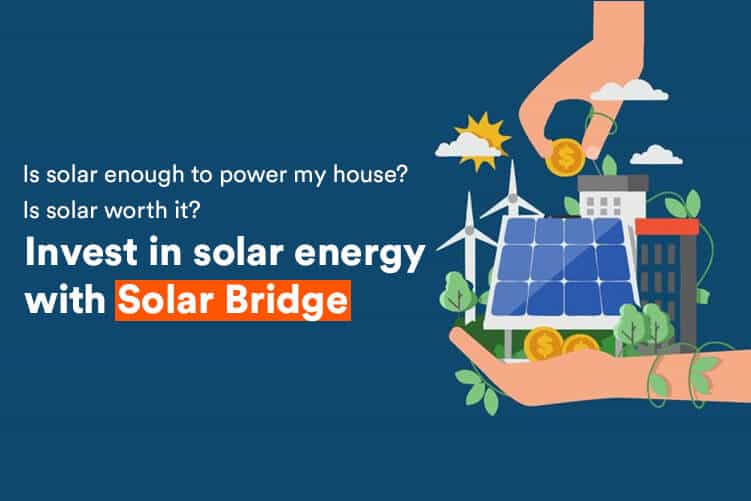Due to the sharp rise in energy costs over the past few months and years, many households are now searching for alternate, renewable energy sources. Solar energy has taken centre stage as a result of high power costs, which have been made worse by the conflict between Russia and Ukraine, as well as an overall increase in the cost of living and a growing awareness of the need to “go green.”
Since solar energy has been used for many years, you’ve probably noticed solar panels on the roofs of your neighbours’ homes or possibly heard someone mention that their home is powered by solar energy. But when it comes to taking a step and investing in solar panels, there is still some scepticism for many.
Some of the questions that support the uncertainty of individuals looking at installing solar are:
- Is it possible to power a house just with sunlight?
- Can I get rid of the grid?
- Are solar panels really worth it in Australia?
To answer the first question, we need to get into the details of how solar power works?
You might as well be aware of the working of solar, in that case you may want to skip this part and read further.
- Solar panels absorb the solar energy (radiation and heat energy) and convert it to Direct Current (DC) electricity. However, DC electricity is unable to power a home or workplace on its own because of differences in generation and appliance/s requirements.
- A Solar Inverter converts DC electricity generated by the solar modules to Alternating Current (AC) electricity, which is required by most appliances.
- AC electricity flows through the home or workplace, thus powering electronic devices.
- Excess electricity produced by the solar panels is supplied to the electric grid or batteries for feed-in-tariffs or for future use.
The electricity your solar panels generate depends on the location of the property, the size of the solar system and solar products installed. An average household in Australia consumes approximately 17-20kWh per day. On an average a typical 6.6kW solar system in Brisbane produces 24-26kWh per day. Most of your electricity demand can be met with solar energy, however, batteries can be used in the night times and during the extreme weather conditions.
Can I get rid of the grid?
Most of us want to do our bit for the environment by reducing our carbon footprints and limiting the use of fossil fuels while also gaining some degree of independence from the stipulations of all-powerful power suppliers. As most of us have seen a significant rise in their power costs recently.
Off-grid solar systems or standalone solar systems, offer complete independence from grid electricity in locations where grid power is either not accessible or is being immediately replaced by more expensive or unreliable grid power. Most of the properties are on grid solar systems rather than off grid. Off grid solar systems call for higher installation costs, greater payback period, and limited solar energy storage necessitates massive battery backups and lastly you need to be mindful about the efficiency of your system, in any case if the system is not working you cannot source power from other sources.
These occurrences are, of course, declining in frequency as technology develops, and the ultimate goal is to be able to power buildings solely with solar energy. But for the time being, a coexistence of solar and grid power is required.
If you get a grid connected solar system, you will receive credit on your energy bills for any extra electricity your solar panels produce that is fed back into the grid.
On grid solar systems offer various financial incentives that can make your solar investment fruitful and the benefits of on grid solar outweigh the off grid solar system.
Are solar panels worth it in Australia?
Lastly, the question that arises is “is going solar worth it in Australia in 2022?” this is something you already know but there we go:
- The federal solar rebate reduces every year, making the cost of installing solar higher, which means the more you avoid it, the more you pay for it.
- The energy crisis in Australia is increasing the energy costs.
- Solar panels technology is advancing and the more efficient panels make solar investment worth it, providing better ROI.
If figures amuse you, on an average a typical 6.6kW solar system in Australia usually pays back within 2-3 years of time. Installing a high-quality solar energy system can also boost the home’s value and potential rental income because new owners or tenants will be able to take advantage of the solar panels.
Invest in solar energy with Savvy Solar
You must be aware that home solar panel systems come in a variety of forms, sizes, construction types, and power outputs. If you are looking at getting a reliable solar PV system in Australia, Savvy Solar is the solution. Contact us right away to learn more about your solar PV system options and speak to our professional solar consultant.
